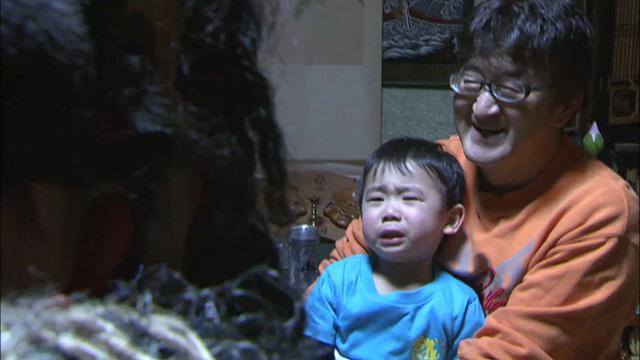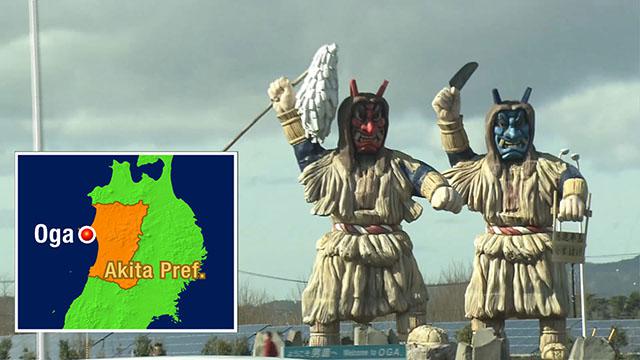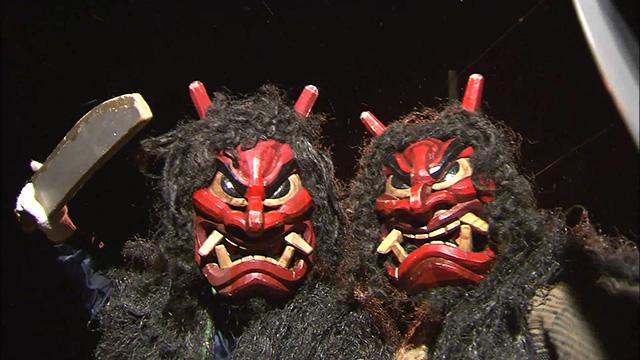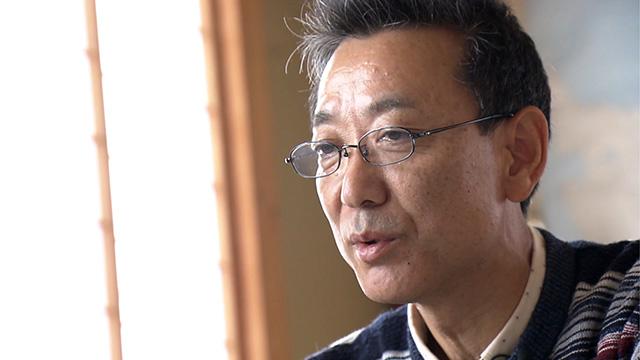The tradition is one of 10 Japanese folk events that UNESCO added to its list of intangible cultural heritage late last month. They all involve costume-wearing deities visiting homes or communities.
But in Oga, an aging population has meant that the Namahage tradition is disappearing from some communities.
I attended my first Namahage on New Year's Eve 2017. I was at a home and it was quiet. Snow fell silently outside. There were rustling sounds, then the door burst open and in came the Namahage. He growled at the little girl of the family, "Is there a bad child here?" She burst into tears and clutched her grandfather.
The Namahage don't visit homes to do harm. They go to warn children not to be lazy. And their appearances help deepen family bonds. The grownups protect the children from the scary visitors.

Oga is located on a peninsula surrounded by the Sea of Japan. It's a beautiful place with a population of 28,000. Deep snow blankets the city in winter.
Namahage statues greet visitors at the city entrance. The deities also feature on road safety signs and souvenir packages. There is clearly a deep connection between the ritual and the people of the city.

It used to be held in most communities in the city. But only a third are now able to host the event.
A major reason is the aging population and low birthrate. 36.3 percent of the Akita Prefecture population is 65 or older -- one of the highest rates in Japan.
Unmarried men are traditionally supposed to play the Namahage, but their numbers are shrinking. In some areas, the Namahage are played by men who are almost 70. Some have been doing it for more than 50 years.

There are some who see the UNESCO listing as an opportunity to lay new plans to revive the tradition. 59-year-old Yoshihiro Kimoto lives in an Oga suburb. Namahage was last held in his district more than 2 decades ago.
Kimoto's plan has two elements. One is to lessen the burden on residents. Traditionally, homes that welcome the deities must give them the red-carpet treatment, serving them food and drink. This is no small task for aging and shrinking families. In Kimoto's revamped Namahage, he plans to ask each family in advance whether they can host the tradition. If yes, he asks whether they would be willing to let them into their house or if they would prefer the ritual to take place at the door.
The second element is to reduce the workload of the men playing the Namahage. The ritual often lasts late into the night. Kimoto plans for the new event to finish by 9 PM so the men can go home and ring in the New Year with their families.
Kimoto hopes reviving Namahage will entice residents who have left the district for work or school to come home for visits. He thinks this would boost spirits and unite communities. And he thinks this is a good opportunity to work with neighbors to restore and preserve the newly recognized tradition.

The people of Oga gathered at the City Hall to witness the addition of Namahage to the UNESCO list. Kimoto was among the happy faces there. He said this motivates him to do his best to revive the tradition.
As winter descends on Oga and the New Year approaches, Kimoto is set to begin making preparations to breathe new life into the tradition.

